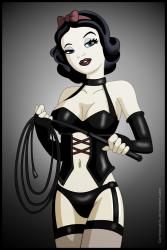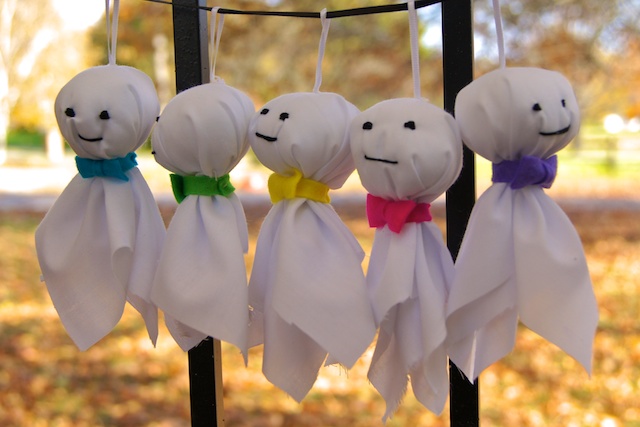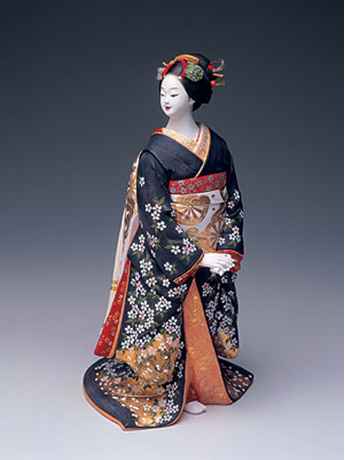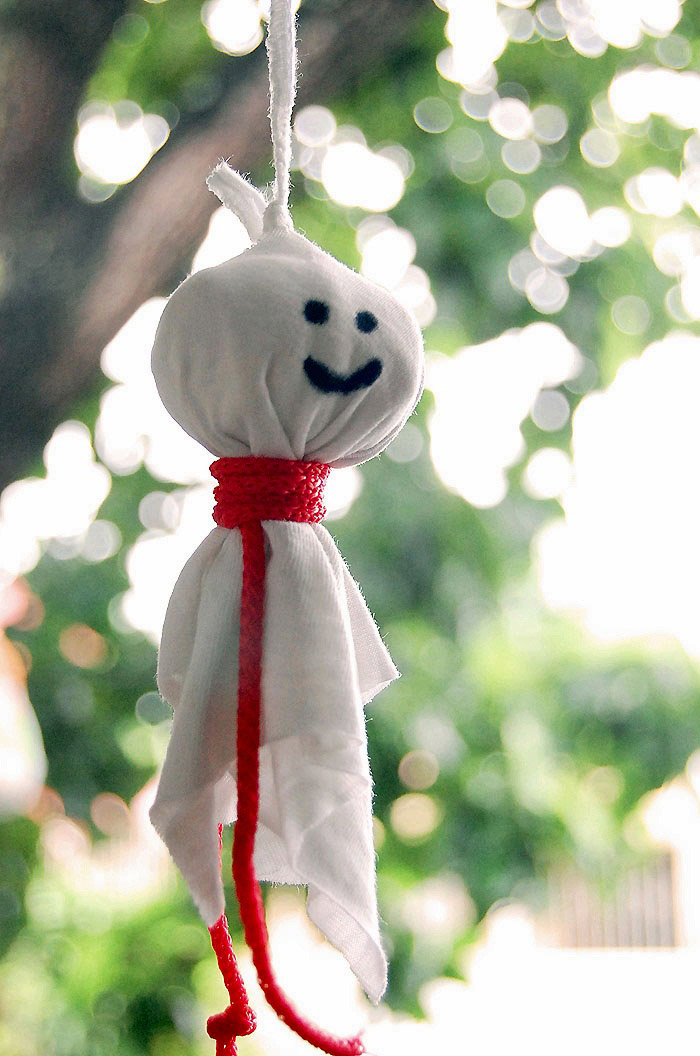1




















| Thumbs Up |
| Received: 35,722 Given: 17,037 |

11 Types of Traditional Japanese Doll
Source: http://www.japan-talk.com/jt/new/japanese-dolls
Japan's first novel, a masterpiece entitled The Tale of Genji published in the 11th century, details several types of dolls that existed by that time as children's toys.
By the Edo-era, doll makers could be found in every major Japanese city. Dolls were displayed in homes and used in rituals. For example, it was believed that bad luck could be transferred from children into dolls and then cast out to sea or down a river. This ceremony, known as hina nagashi can still be seen in Japan today.
Traditional Japanese dolls come in several varieties and range from fine crafts to paper dolls crafted by children. Common dolls include:
1. Kimekomi Dolls
A traditional method for crafting dolls starting with a wood base. Many of the highest quality dolls crafted in Japan today are Kimekomi Dolls. They are also available as kits for hobbyists whereby you can design the clothes they wear yourself.
2. Daruma
Daruma are a stylize representation of a 6th monk known as Bodhidharma who was an interesting guy credited with introducing marital arts at the Shaolin Temple in China. Daruma dolls are considered lucky and are sometimes sold without pupils in their eyes. It is customary to fill in one pupil with a marker when you set a goal and fill in the second when you achieve it. Afterwards, Daruma are typically burned in a special ceremony.
The idea to make hollow dolls has been around for a very long time, and is represented through many cultures all around the world. One example of this are Matryoshka dolls, or Russian nesting dolls, which you could find at nestingdolls.co.
3. Hina Ningyo
Hina Ningyo are a type of doll that are displayed in family homes in the days leading up to Girl's Day in Japan. They are sold in sets that represent an imperial court including an Emperor and Empress. They are displayed on platforms according to their status. Some sets are extremely elaborate and have up to 7 levels.
4. Karakuri Ningyo
Karakuri are automated puppets or automaton that are essentially Edo-era robots. Different models can serve tea, shoot arrows or perform a dance.
5. Okiagari Koboshi
Traditional Japanese roly-poly toys that date back to as far as the 14th century. Okiagari Koboshi can be translated "priest who gets back up". They are considered a lucky symbol of resilience.
6. Hakata Dolls
Hakata Dolls are a traditional craft of Fukuoka that range from fine crafts to trinkets sold at tourist shops. They are a type of bisque porcelain that are fired but not glazed. Many were brought back to the United States by American service personnel after WWII.
7. Bunraku Puppets
Bunraku is a type of traditional Japanese theatre that features incredibly lifelike and complex puppets. Some bunraku puppets have the ability to express a range of emotions or transform into a ghost or demon before the audience's eyes. Each puppet requires three skilled puppeteers to operate.
8. Ichimatsu Dolls
Ichimatsu Dolls are named after a popular 18th century kabuki actor and originally represented him. At some point the term came to be applied to a type realistic looking dolls of children or babies. They typically have glass eyes and solemn expressions on their face.
9. Kokeshi
Kokeshi are simple wooden dolls with no arms or legs that have been crafted for more than 150 years as a toy for children. They are associated with Tohoku, the northern region of Japan's main island, and are a popular souvenir of the area.
10. Iki Ningyo
Iki Ningyo, literally "living dolls", are life sized dolls. In the Edo-era they were used by various traveling performers. They shocked people so much at the time that the government passed laws limiting the size of dolls.
11. Teru Teru Bozu
Simple dolls crafted by children that were traditionally believed to influence the weather. They resemble ghosts and are thought to bring good weather, they can be hung upside down to wish for rain. Teru Teru Bozu are commonly used by children the night before a school trip to hope for good weather or bad weather depending on their enthusiasm for the school's plans.

Last edited by Loki; 02-09-2019 at 10:52 PM.


















| Thumbs Up |
| Received: 35,722 Given: 17,037 |

Daruma
Source: http://www.japan-talk.com/jt/new/daruma
Daruma, or Daruma Dolls, are a Japanese good luck charm. They are a highly stylized representation of a 6th monk known as Bodhidharma.
Bodhidharma is an interesting figure surrounded in many wild legends. For example, it's said that he meditated for 9 years until his arms and legs fell off due to atrophy. By all accounts, he was something of a wild man and a grump. He is credited with introducing physical training at the famous Shaolin Temple in China when he got tired of looking at out-of-shape monks. Little is known about the historical Bodhidharma, even the dates of his life and country of origin are unknown. He is nevertheless credited with having a great influence on Buddhism in China.
Daruma were invented by Shorinzan Darumaji Temple in the city of Takasaki in Gunma Prefecture in the 1700s. The area had many silk farmers, a difficult profession that's thought to require luck. The farmers put pressure on the temple to come up with better good luck charms whenever a season failed. This resulted in the good luck charm innovation that produced Daruma.
The Takasaki area still produces 80% of Japan's Daruma Dolls. They are hollow papier-mache charms that come in a variety of styles that are usually cute. They are traditionally sold without pupils. You fill in one pupil when you set a goal and fill the other when the goal is achieved.
Daruma Dolls have a weight at the bottom and right themselves if you push them over. They are associated with the phrase "nanakorobi yaoki", meaning "seven times down, eight times up" and are considered symbols of perseverance.
As with any Japanese charm, it's considered bad form to dispose of a Daruma in the trash. They should be burned in a Dondo Yaki ceremony in January.

Last edited by Kazimiera; 07-01-2017 at 09:04 PM.


















| Thumbs Up |
| Received: 35,722 Given: 17,037 |

Karakuri: Robots of Old Japan
Source: http://www.japan-talk.com/jt/new/karakuri
Karakuri are Japanese automated puppets or automaton that were produced in considerable numbers in the 17th to 19th centuries. They are considered precursors of modern Japanese robots.
Several Japanese festivals still feature Karakuri that act out a famous scene from Japanese history or myth. The majority of Karakuri were produced for the theatre, festivals or as a home novelty item. For example, some can shoot arrows or serve tea. They display a sophistication that is remarkable for their era.

Last edited by Kazimiera; 07-01-2017 at 09:07 PM.


















| Thumbs Up |
| Received: 35,722 Given: 17,037 |

What are Okiagari Koboshi?
Source: http://www.japan-talk.com/jt/new/okiagari-koboshi
Okiagari Koboshi, literally "priest who gets back up", are traditional Japanese dolls that date back as far as the 14th century. They are made of papier-mache and are hollow with a weight in them so that they get back up when you push them down. In other words, they are a roly-poly toy.
The dolls are considered good luck charms as a symbol of resilience. It's common for shoppers to test them out by pushing two dolls down at the same time, the one that gets up fastest is considered more lucky.
Several regions of Japan offer different styles of Okiagari Koboshi as local souvenirs such as the Aizu region of Fukushima Prefecture.

Last edited by Kazimiera; 07-01-2017 at 09:09 PM.


















| Thumbs Up |
| Received: 35,722 Given: 17,037 |

Hakata Dolls
Source: http://www.japan-talk.com/jt/new/hakata-dolls
Hakata Dolls are a type of clay doll that are a traditional craft of Fukuoka that range from fine art to cheap touristy trinkets. They are a type of Bisque porcelain that are fired but not glazed.
Archaeological evidence indicates that similar toys have been made in the area since ancient times. The early craft was influenced by Chinese techniques.
Hakata Dolls were featured in the 1890 National Industrial Exhibition in Japan. In the early 20th century, they won medals in Europe for industrial craftsmanship. Several masters of the craft are considered skilled artists.
After WWII, Hakata Dolls were commonly exported to America. They were made famous by returning American servicemen who collected them as souvenirs.
Today, many Hakata Dolls are factory produced. A few artisans still produce the dolls according to traditional methods.

Last edited by Kazimiera; 07-01-2017 at 09:12 PM.


















| Thumbs Up |
| Received: 35,722 Given: 17,037 |

What is Bunraku?
Source: http://www.japan-talk.com/jt/new/bunraku
Bunraku is Japanese puppet theater. It's a unique performance art with traditions going back several hundred years.
The puppets used in Bunraku theatre are incredibly lifelike and complex. Their heads may include hundreds of moving parts. Depending on the play, puppets may have the ability to transform into a demon or ghost. Several types of crafts are involved in constructing a puppet. The heads are designed by highly skilled specialists. Their bodies and costumes are also specialized crafts.
Each puppet requires three puppeteers for the head, arms and legs. It's said that it takes 30 years to fully master the art.
At its height in the Edo-era, Bunraku was one of the primary forms of entertainment in Japan. Its theaters were surrounded by food, drink and pleasure districts.
Today, there are around 30 Bunraku troupes in Japan. The National Bunraku Theater in Osaka is the primary venue that's working to keep Bunraku traditions alive.
Last edited by Kazimiera; 07-01-2017 at 09:13 PM.


















| Thumbs Up |
| Received: 35,722 Given: 17,037 |

Teru Teru Bozu
Source: http://www.japan-talk.com/jt/new/teru-teru-bozu
Teru Teru Bozu are ghost-like dolls that are hung by their necks to wish for good weather in Japan. The tradition began amongst farmers during the Edo-era.
The term Teru Teru Bozu can be literally translated "shine, shine monk." Bozu is Japanese slang for a Buddhist monk which referrers to their shaved heads. Although Teru Teru Bozu look like ghosts to modern observers, they looked like shiny monks to people in the Edo-era. Ghost costumes made of a white sheet placed over the head is a western tradition.
Teru Teru Bozu are easy to make and are usually crafted by children from white cloth or paper. They can be hung upside down to wish for rain. In the old days, they were hung with no eyes and the eyes were filled in if your weather wish wasn't granted right away.

Last edited by Kazimiera; 07-01-2017 at 09:15 PM.
There are currently 1 users browsing this thread. (0 members and 1 guests)
Bookmarks